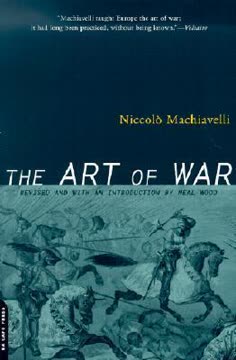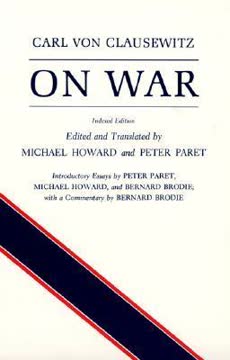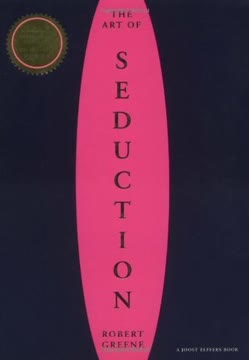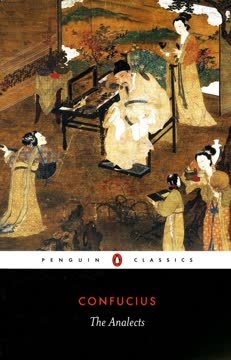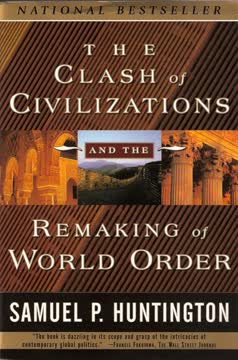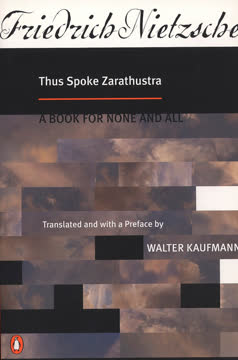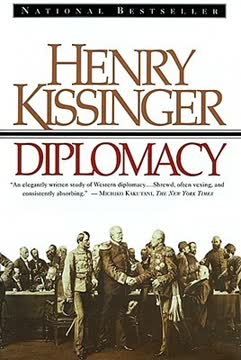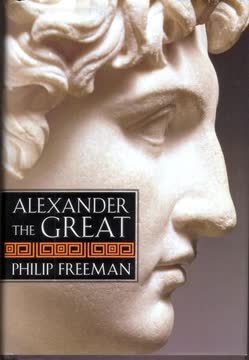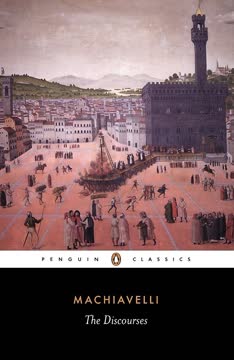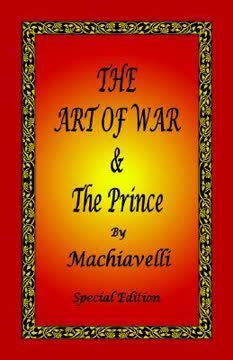Key Takeaways
1. Professional Armies Corrupt States and Individuals
Men who want to do something, ought first to prepare themselves with all industry, in order ((when the opportunity is seen)) to be prepared to achieve that which they have proposed.
Inherent corruption. War, when practiced as a profession, inherently corrupts individuals and endangers the state. Professional soldiers, driven by the need for continuous employment or plunder, become rapacious, deceitful, and violent, making them unfit for a good society. This contrasts sharply with the ancient ideal where military service was a civic duty, not a career.
Dangerous for states. Such professional armies pose a direct threat to the stability of both republics and kingdoms. They are incentivized to prolong conflicts or instigate new ones for their own gain, and in times of peace, they resort to banditry or even usurp power. History offers stark warnings:
- Carthaginian soldiers turned against their own state.
- Francesco Sforza, a mercenary captain, seized Milan.
- The Roman Praetorian Guard, a professional force, became kingmakers and destroyers of emperors.
Erosion of virtue. The reliance on professional soldiers erodes the civic virtue necessary for a healthy state. Citizens become disarmed and complacent, losing the martial spirit and self-reliance that once protected their liberties. This dependency makes the state vulnerable to both internal tyranny and external aggression, as its defense rests on the self-interest of a few rather than the collective will of its people.
2. Citizen Militias are the Foundation of a Strong State
The arms carried by his citizens or subjects, given to them by laws and ordinances, never do him harm, but rather are always of some usefulness, and preserve the City uncorrupted for a longer time by means of these (arms), than without (them).
Civic duty, not profession. A well-ordered republic or kingdom should never permit its citizens or subjects to make war their sole profession. Instead, military training should be an exercise in peacetime and a necessity for glory in war. This ensures that soldiers remain integrated into civilian life, returning to their trades and families once conflicts conclude.
Preserving liberty. Citizen armies, or "ordinances," are the most reliable defense for a state. Unlike mercenaries, who are easily corrupted and can turn against their employers, armed citizens are bound by loyalty to their country and its laws. The Roman Republic, armed by its own citizens, remained free for centuries, while disarmed cities often fell within decades.
Unity and strength. An ordinance system fosters unity and strength within the populace. Even in a warlike or disunited country, providing useful arms and disciplined leadership can channel destructive energies into public service. This system ensures that the state's military power is an extension of its people's will, making it formidable against foreign enemies and resilient against internal strife.
3. Strategic Recruitment and Rigorous Training are Paramount
But because military institutions have become completely corrupt and far removed from the ancient ways, these sinister opinions have arisen which make the military hated and intercourse with those who train them avoided.
Selecting the best. Recruitment should prioritize quality over quantity, drawing from one's own subjects rather than unreliable foreign mercenaries. For infantry, men from the countryside are preferred due to their hardiness and familiarity with physical labor. Cavalry, often requiring more resources, can be drawn from wealthier city dwellers.
Age and aptitude. For a new army, recruits should range from seventeen to forty years old, ensuring a broad pool of capable individuals. For replenishing existing forces, seventeen-year-olds are ideal, as they can be molded and integrated. Physical attributes like agility, strength, and lively eyes are important, but honesty and a sense of shame are crucial to prevent corruption.
Comprehensive training. Training must be rigorous and continuous, encompassing physical conditioning, weapon proficiency, and tactical discipline.
- Physical: Running, jumping, wrestling, carrying heavy weights, swimming.
- Weapons: Using practice weapons heavier than actual ones, focusing on thrusting over slashing for greater lethality and defense.
- Discipline: Learning to maintain ranks, obey commands (bugle calls, flags, voice), and execute maneuvers quickly.
This holistic approach ensures soldiers are not only physically capable but also mentally prepared and highly disciplined.
4. Optimal Arms and Flexible Formations Ensure Victory
I would take both the Roman arms and the German, and would want half to be armed as the Romans, and the other half as the Germans.
Hybrid armament. A superior infantry combines the strengths of Roman and German armaments. Half the force should be equipped with Roman shields and swords, offering robust defense and close-quarters combat effectiveness. The other half should wield German pikes and light guns, providing a strong front against cavalry and initial penetration against infantry.
Strategic deployment. Pikemen should be positioned in the front lines or where cavalry threats are highest, leveraging their reach. Shield-bearers follow, ready to engage with swords once the pikes have broken the enemy's initial charge or become unwieldy in close combat. This layered approach ensures versatility and resilience against diverse enemy formations.
Adaptive formations. Armies must be trained in various formations to adapt to terrain and enemy tactics. The Roman system of receiving one rank into another (Astati, Principes, Triari) offers multiple chances to renew the fight, unlike the Greek phalanx which, though solid, could only be depleted. Fabrizio's proposed battalion structure, with its mix of pikes and shields, allows for both the solidity of the phalanx and the flexibility of the Roman legion.
5. Dynamic Battle Tactics and Adaptability in Engagement
The greatest mistake that those men make who arrange an army for an engagement, is to give it only one front, and commit it to only one onrush and one attempt (fortune).
Layered defense and offense. An army should never rely on a single front or a single charge. Instead, it must be organized to receive and reinforce its lines, allowing for multiple engagements. The Roman model, with its Astati, Principes, and Triari, provided three opportunities to renew the battle, making it incredibly resilient.
Artillery integration. Artillery should be used decisively and then quickly secured. Firing once and then rapidly advancing to seize enemy guns prevents them from reloading and inflicting further damage. The smoke from continuous firing can also blind one's own troops, making a swift, focused assault preferable to a prolonged artillery duel.
Situational awareness. Captains must constantly adapt their formations and tactics to the specific conditions of the battlefield.
- Terrain: Utilize natural obstacles against cavalry, or open fields for larger, disciplined forces.
- Enemy: Exploit weaknesses, avoid their strengths, and be prepared for their deceptions.
- Sun/Wind: Position the army to avoid these elements hindering vision or aiding enemy projectiles.
This adaptability, combined with a well-trained and organized force, is key to overcoming diverse challenges and securing victory.
6. Disciplined Marching and Secure Encampment
The Romans, therefore, where the site lacked strength, supplied it with (their) art and industry.
Orderly movement. An army must march in a disciplined formation, ready for unexpected assaults from any direction. The Roman practice of sending cavalry observers ahead, followed by organized wings and legions with their baggage, allowed for rapid transformation from marching order to battle formation. This prevents disorganization and ensures a swift response to threats.
Fortified camps. Encampments should prioritize safety through both natural strength and artificial fortifications. While Greeks sought naturally strong locations, Romans mastered the art of creating strong camps anywhere, using ditches, ramparts, and embankments. This allowed for a consistent camp layout, regardless of terrain, making it a "movable city" where every soldier knew his place.
Strategic layout. Fabrizio's proposed camp design for 24,000 infantry and 2,000 cavalry emphasizes clear organization:
- Captain's quarters at the center.
- Armed men on the east (front), unarmed and baggage on the west (rear).
- Designated roads (Captain's Way, Cross Way) for movement.
- Cavalry and infantry quarters arranged in rows, with specific duties (e.g., infantry assisting cavalry).
- A 100-arm length space between quarters and the ditch for maneuvers and additional defenses.
This meticulous planning ensures security, facilitates logistics, and maintains order within the army.
7. Effective Logistics, Rewards, and Harsh Punishments
The Roman punished with the capital penalty whoever was missing from the guard, whoever abandoned the place given him in combat, whoever brought anything concealed from outside the encampment; if anyone should tell of having performed some great act in battle, and should not have done it; if anyone should have fought except at the command of the Captain, if anyone from fear had thrown aside his arms.
Streamlined provisions. Ancient armies prioritized efficiency in logistics, avoiding the modern reliance on wine and baked bread. Soldiers carried flour, vinegar, lard, and barley, preparing their own food. This self-sufficiency allowed armies to traverse difficult terrain for extended periods without supply chain vulnerabilities, a stark contrast to modern armies often hampered by their need for elaborate provisions.
Public booty, shared rewards. To prevent greed and maintain discipline, all spoils of war should belong to the public, managed by quaestors and distributed based on merit. This incentivizes soldiers to focus on winning battles rather than plundering, ensuring the army remains cohesive and effective. A portion of a soldier's pay should also be held by the company's flag-bearer, encouraging saving and fostering a fierce defense of the standard.
Strict discipline. Discipline is enforced through a system of harsh punishments and clear rewards. Capital punishment for serious offenses like desertion or abandoning post, and decimation for collective failures, instilled profound fear. Conversely, great deeds were publicly recognized and rewarded, fostering courage and ambition. This balance of fear and hope was crucial for maintaining order and motivating soldiers to perform heroically.
8. Psychological Warfare and Deception as Force Multipliers
To want to worry the enemy during the battle, something must be made to happen which dismays him, either by announcing new help which is arriving, or by showing things which look like it, so that the enemy, being deceived by that sight, becomes frightened; and when he is frightened, can be easily overcome.
Exploiting fear and hope. A cunning captain understands that war is fought as much in the minds of men as on the battlefield. Deception, false rumors, and feigned movements can sow discord and fear among enemy ranks, making them easier to defeat. Conversely, inspiring hope and confidence in one's own troops through oratory and visible leadership is vital.
Strategic misdirection. Captains employ various stratagems to gain an advantage:
- False intelligence: Communicating false plans to spies or allowing prisoners to "escape" with misleading information.
- Feigned weakness: Pretending to be inferior or in disarray to draw the enemy into an ambush.
- Diversions: Attacking a different part of the enemy's territory to force them to divide their forces.
- Unusual sights/sounds: Using camels, elephants, or loud gunfire to disorient enemy cavalry.
These tactics aim to disrupt the enemy's morale and decision-making, creating opportunities for decisive strikes.
Maintaining secrecy. Secrecy is paramount in all military operations. A captain should keep his plans hidden even from his own army, and camp size should not reveal increases or decreases in force. This prevents the enemy from anticipating movements or strengths, ensuring that any attack comes as a surprise and maximizes its impact.
9. Fortification Design and Siege Craft for Urban Defense
I believe, therefore, ((subject to a better judgement)) that if you want to make provision against both evils the wall ought to be made high, with the ditches inside and not outside.
Innovative city defense. Modern artillery necessitates a re-evaluation of city fortifications. High, thick walls (at least three arm lengths wide) are crucial, but the most effective defense involves an internal ditch. If the outer wall is breached, its rubble falls into this ditch, doubling its depth and creating an impassable barrier, while defenders can safely fire from behind the ditch's inner wall.
Avoiding common pitfalls. Traditional bastions placed outside city walls are easily lost to artillery and demoralize defenders. Similarly, internal redoubts within a fortress can foster a false hope of retreat, leading to the premature abandonment of outer defenses. A fortress should be designed so that the loss of its main walls means the loss of the entire structure, compelling defenders to fight with utmost resolve.
Advanced gate and access control. City gates require sophisticated defenses beyond simple drawbridges. Revets (outworks) should cover entrances, forcing indirect access. Grid-like shutters, as seen in Germany, are superior to solid planks, allowing defenders to fire through them even when lowered. These measures prevent direct assaults and protect against enemy infiltration during chaotic retreats.
10. The Perilous Folly of Winter Warfare
There is nothing more imprudent or more perilous to a Captain than to wage war in winter, and more dangerous to him who brings it, than to him who awaits it.
Organizational decay. Winter campaigns are inherently detrimental to military discipline and organization. Harsh weather, cold, and wet conditions force armies to disperse into separate quarters, negating the rigorous training and cohesive formations developed in warmer seasons. This disunity makes them vulnerable and ineffective.
Strategic disadvantage. The aggressor in a winter campaign faces greater disadvantages, as they are in foreign territory and more exposed to the elements. The defender, conversely, can choose favorable locations, keep their forces fresh and united, and strike with full fury when the enemy is weakened and scattered. The French defeat at Garigliano in 1503, attributed to winter rather than Spanish prowess, serves as a stark historical warning.
Ancient wisdom. The Romans, who valued discipline and organization above all, meticulously avoided winter warfare and difficult terrain that would impede their ability to fight in a structured manner. They understood that preserving the health and cohesion of the army was paramount, and that only a fool would sacrifice these advantages by campaigning in the harshest seasons.
11. The Captain's Virtues: Prudence, Oratory, and Reputation
Above all, it is important for the Captain to know the enemy, and who he has around him: if he is foolhardy or cautious: if timid or audacious.
Prudent counsel. A captain must be surrounded by loyal, expert, and prudent advisors with whom he constantly consults. This collective wisdom is essential for assessing one's own forces, understanding the enemy's strengths and weaknesses, evaluating terrain, managing supplies, and making critical decisions about when to engage or delay battle.
Masterful oratory. The ability to speak effectively to the entire army is a non-negotiable virtue for a captain. Through powerful speeches, a leader can dispel fear, incite courage, increase obstinacy, expose deceptions, promise rewards, and address grievances. This direct communication fosters unity and morale, transforming a collection of individuals into a cohesive fighting force, as exemplified by Alexander the Great.
Unwavering reputation. A captain's reputation, built solely on his virtue, is the ultimate glue that holds an army together. This reputation is earned through consistent payment of soldiers, swift and just punishment for transgressions, and the recognition of valor. Without a strong reputation, a captain loses authority, leading to tumults, discord, and the eventual ruin of the army.
Last updated:
Review Summary
The Art of War presents Machiavelli's views on military strategy through a dialogue format. While some readers find it tedious and outdated, others appreciate its insights into Renaissance warfare and leadership. The book emphasizes infantry over cavalry, discipline over passion, and the importance of citizen militias. Machiavelli draws heavily from ancient Roman military practices, adapting them to his era. Though not as popular as his political works, it offers valuable lessons on strategy and organization that extend beyond military applications.
Similar Books
Download PDF
Download EPUB
.epub digital book format is ideal for reading ebooks on phones, tablets, and e-readers.
